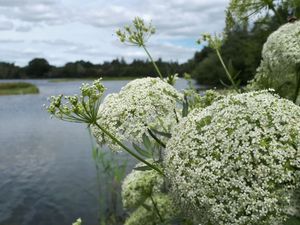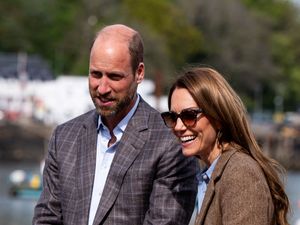Projects planned to bring back nature and connect people with the wild
Recreating fenland and turning land near homes into wild reserves for nature and people are among the schemes by Wildlife Trusts.

The Wildlife Trusts federation is launching an appeal to support projects which aim to restore nature to the landscape, as part of a wider bid to see 30% of land helping wildlife by 2030.
Here are some of the projects trusts are planning:
Lincolnshire Wildlife Trust aims to recreate 50 hectares of lost peat fenland and Bourne North Fen to become a home for wildlife including rare cranes and plants such as the greater water parsnip in a £1.8 million project.

Turning farmland back into reed-rich fenland will link up important nature reserves, and will store water for agriculture, improve water quality for consumers and help encourage local ecotourism, the trust says.
Tammy Smalley, head of conservation, Lincolnshire Wildlife Trust, said the site would deliver water management and nature, with the hope that iconic species such as the swallowtail butterfly could recolonise the area.
And she said: “We hope that because we’re creating it in a network, what we’re creating is a destination where people will want to come and enjoy nature and learn about all the value of nature.
“It’s good for wild beings but it can also deliver really crucial services for communities, so we could see our economy in south Lincolnshire around nature tourism continue to grow.”
Warwickshire Wildlife Trust is prioritising acquiring land that currently provides low value for wildlife, is difficult to farm productively, and where the investment will deliver most for nature, to create bigger, better and more joined-up wild areas.
It will also continue to work in partnership with local councils, farmers and landowners and local business to help them make space for nature on their land.
Land purchased for new reserves could see meadows for butterflies and wetland created to support endangered water voles, and will create more wild spaces that are near homes and accessible to the public, the trust says.
Ian Jelley, director of living landscapes at Warwickshire Wildlife Trust, said: “It’s scientifically proven now that if you spend time in the outdoors connecting with nature you feel better about yourself, that can help reduce mental health issues and help physical health issues, and that will generally take pressure off things like the NHS, which are overburdened at this time.”
And he said: “Our two main aims are to bring people closer to nature, and enable wildlife to exist everywhere across our patch, and a project like this at scale enables to achieve both those objectives.”
The trust has £1 million for the scheme and hopes to raise another £1 million.

Meanwhile, Hampshire and Isle of Wight Wildlife Trust has plans to reintroduce beavers to the complex of wetland nature reserves in the Eastern Yar Valley on the island.
The trust sees the area as an opportunity, subject to a Government decision on the future of the animals in England, to reintroduce wild beavers to engineer the landscape for nature.
It is also working on returning missing farmland birds such as cirl bunting and chough to the island.
Lancashire Wildlife Trust has a pioneering carbon farm at Winmarleigh, which the conservation group says is thought to be the first of its kind in the UK.
The site was drained for agriculture in the 1970s, but work has now started to rewet fields and plant more than 100,000 plugs of spagnum moss with the aim of locking carbon into soils and capturing it from the atmosphere.
The carbon farm is part of a project across five European countries to see how peatlands capture carbon.





